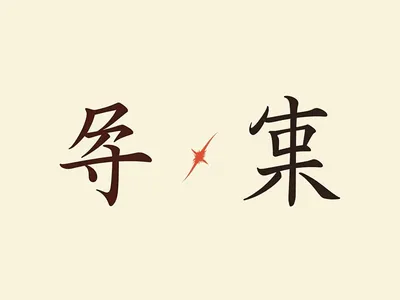
Are there any specific Chinese characters that frequently cause confusion with English words
False friends when learning Chinese: Are there any specific Chinese characters that frequently cause confusion with English words
Certain Chinese characters often cause confusion with English learners due to their similar appearance, pronunciation, or subtle differences in meaning. Below are some specific examples of such characters and why they might be confusing:
Characters with Similar Appearance
-
土 (tǔ) vs 士 (shì):
- 土 means “soil” or “earth,” while 士 means “scholar” or “gentleman.”
- The difference lies in the length of the horizontal strokes: the top stroke is shorter in 土 but longer in 士 6.
-
犬 (quǎn) vs 太 (tài):
- 犬 means “dog,” while 太 means “too” or “very.”
- 犬 has a more angular shape, while 太 includes a small dot radical (丶) above the character 大 (big) 6.
-
王 (wáng) vs 主 (zhǔ):
- 王 means “king,” and 主 means “master.”
- 主 has an additional dot on top, which can be associated with a torch, symbolizing mastery 6.
-
鸟 (niǎo) vs 乌 (wū):
- 鸟 means “bird,” and 乌 means “crow.”
- 鸟 includes an extra horizontal line at the top, representing the bird’s eye, while 乌 does not 6.
Characters with Similar Pronunciation
-
做 (zuò) vs 作 (zuò):
- Both are pronounced the same but have different meanings. 做 is used for actions like “to do” or “to make,” while 作 appears in contexts like 工作 (work) or 作业 (homework) 1.
-
钱 (qián) vs 线 (xiàn):
- 钱 means “money,” and 线 means “line.”
- Both share a similar right-hand side but differ in their left radicals: 钅(metal) for 钱 and 纟(silk) for 线 3.
Characters with Shared Components
-
验 (yàn), 检 (jiǎn), 险 (xiǎn):
- These characters share a similar structure but differ in their left radicals:
- 验: horse radical, meaning “test.”
- 检: tree radical, meaning “check.”
- 险: hill radical, meaning “dangerous” 1.
- These characters share a similar structure but differ in their left radicals:
-
庭 (tíng), 廷 (tíng), 延 (yán):
- These characters look similar but have distinct meanings:
- 庭: court or yard.
- 廷: imperial court.
- 延: prolong or delay 1.
- These characters look similar but have distinct meanings:
Common Beginner Confusions
-
人 (rén) vs 入 (rù):
- 人 means “person,” while 入 means “enter.”
- The shapes are nearly identical, except 入 has a slightly sharper angle at the top 7.
-
大 (dà) vs 太 (tài) vs 犬 (quǎn):
Tips to Avoid Confusion
- Pay attention to radicals and stroke order as they often indicate meaning or category.
- Use mnemonics to remember subtle differences between characters.
- Practice reading characters in context rather than in isolation to better understand their usage.
These examples highlight how small visual or structural differences can significantly change a character’s meaning, making it challenging for learners to distinguish them without careful study and practice.